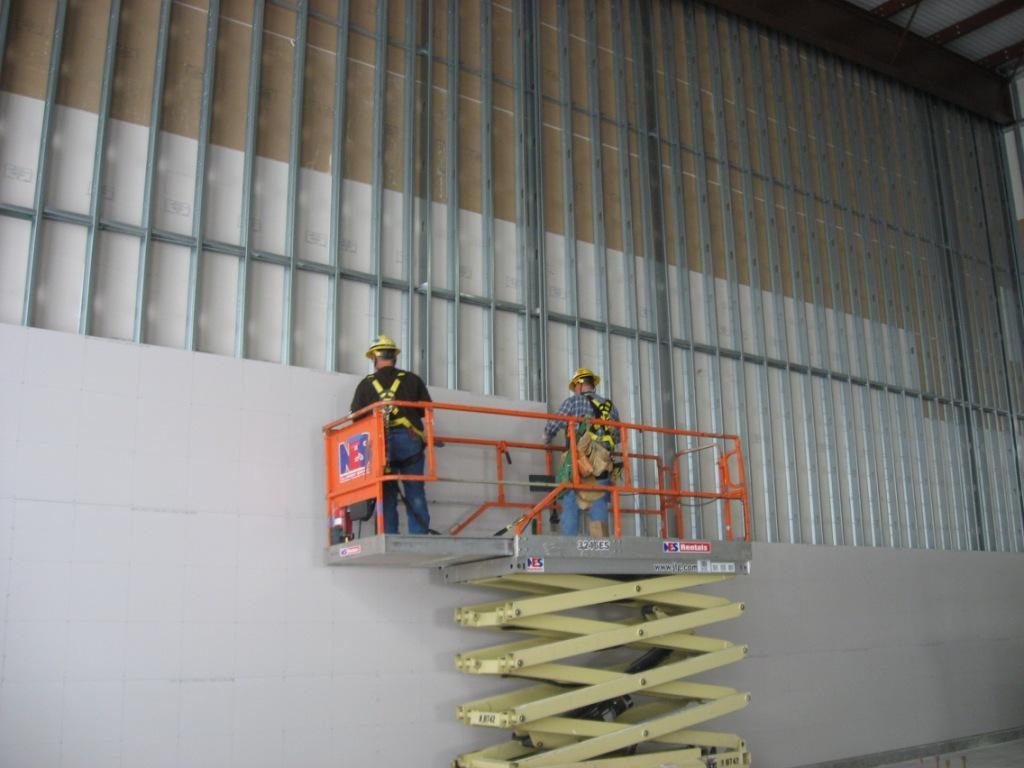In the United States alone, an estimated 24 billion sf of gypsum board, nearly 30 billion sf of flooring, and 11.5 billion sf of insulation are sold annually. Even a modest reduction in the carbon footprint associated with these products could contribute substantively to creating a healthier built environment.
Perkins&Will, in collaboration with Healthy Building Network, a nonprofit research organization, has posted online two reports aimed at changing the way AEC firms select sustainable, lower-carbon building materials.
Drywall and flooring’s production and transportation have notable environmental footprints, and the products can emit hazardous chemicals. Insulation releases greenhouse gases throughout its lifecycle, and can contain toxic chemicals that make interior spaces less safe.
One of the reports, titled “Embodied Carbon and Material Health in Gypsum Drywall and Flooring,” identifies key drivers of embodied carbon (EC) by looking at examples of product categories that are specified frequently for building projects. For gypsum drywall, the biggest opportunity to work toward lower carbon is to reduce energy use at the manufacturing site, states the report. To work toward material health, reducing mercury that drywall releases by using natural, rather than synthetic, gypsum is a key driver.
The report asserts that choosing a product type with lower impacts is the greatest opportunity to reduce EC and avoid chemicals of concern in flooring. Plant-derived bio-based flooring such as linoleum, cork, and hardwood tend to be lower in EC and comprise safer base materials. The report also suggests ways to lessen the impact of carpeting and resilient flooring, such as by reducing the impacts associated with carpet fiber production, and increasing the service life of resilient flooring.
Insulation is not one size fits all
The second report, titled “Embodied Carbon and Material Health in Insulation,” translates results from assessment tools into guidance for manufacturers, AEC firms, and green building programs to optimize their decisions and promote and select healthier, low-carbon products.
The research finds that not all insulation can be used for all applications, nor are all insulation types exchangeable for one another. When insulation is normalized by R value (which measures how well the product resists heat), the biggest opportunities to reduce EC and prioritize material health revolve around product choices.
The report also recommends giving preference to insulation manufacturers with established take-back programs, and favoring products with Health Product Declarations or Environmental Product Declarations that are third-party verified. An Appendix in the insulation report provides lists of product types that specifiers should prefer, reduce, or avoid for lower EC and better material health.
“Our research collaboration with Healthy Building Network underscores the importance of industry partnerships in effecting change,” says Leigh Christy, Principal and co-director of Research at Perkins&Will. “These reports give project teams and the industry at large vital information to make informed decisions about materials and products that are good for people and the planet.”
Related Stories
Contractors | Nov 30, 2022
Construction industry’s death rate hasn’t improved in 10 years
Fatal accidents in the construction industry have not improved over the past decade, “raising important questions about the effectiveness of OSHA and what it would take to save more lives,” according to an analysis by Construction Dive.
K-12 Schools | Nov 30, 2022
School districts are prioritizing federal funds for air filtration, HVAC upgrades
U.S. school districts are widely planning to use funds from last year’s American Rescue Plan (ARP) to upgrade or improve air filtration and heating/cooling systems, according to a report from the Center for Green Schools at the U.S. Green Building Council. The report, “School Facilities Funding in the Pandemic,” says air filtration and HVAC upgrades are the top facility improvement choice for the 5,004 school districts included in the analysis.
Industry Research | Nov 8, 2022
U.S. metros take the lead in decarbonizing their built environments
A new JLL report evaluates the goals and actions of 18 cities.
Reconstruction & Renovation | Nov 8, 2022
Renovation work outpaces new construction for first time in two decades
Renovations of older buildings in U.S. cities recently hit a record high as reflected in architecture firm billings, according to the American Institute of Architects (AIA).
Hotel Facilities | Oct 31, 2022
These three hoteliers make up two-thirds of all new hotel development in the U.S.
With a combined 3,523 projects and 400,490 rooms in the pipeline, Marriott, Hilton, and InterContinental dominate the U.S. hotel construction sector.
Laboratories | Oct 5, 2022
Bigger is better for a maturing life sciences sector
CRB's latest report predicts more diversification and vertical integration in research and production.
Multifamily Housing | May 11, 2022
Kitchen+Bath AMENITIES – Take the survey for a chance at a $50 gift card
MULTIFAMILY DESIGN + CONSTRUCTION is conducting a research study on the use of kitchen and bath products in the $106 billion multifamily construction sector.
Market Data | Apr 14, 2022
FMI 2022 construction spending forecast: 7% growth despite economic turmoil
Growth will be offset by inflation, supply chain snarls, a shortage of workers, project delays, and economic turmoil caused by international events such as the Russia-Ukraine war.
Industrial Facilities | Apr 14, 2022
JLL's take on the race for industrial space
In the previous decade, the inventory of industrial space couldn’t keep up with demand that was driven by the dual surges of the coronavirus and online shopping. Vacancies declined and rents rose. JLL has just published a research report on this sector called “The Race for Industrial Space.” Mehtab Randhawa, JLL’s Americas Head of Industrial Research, shares the highlights of a new report on the industrial sector's growth.
Codes and Standards | Apr 4, 2022
Construction of industrial space continues robust growth
Construction and development of new industrial space in the U.S. remains robust, with all signs pointing to another big year in this market segment

















